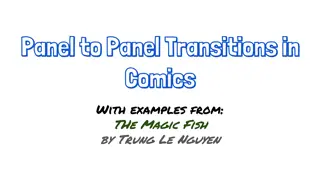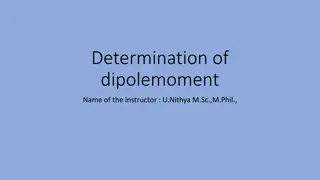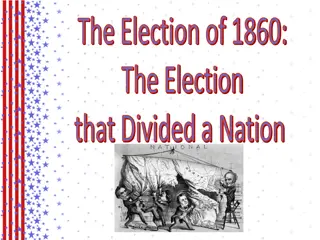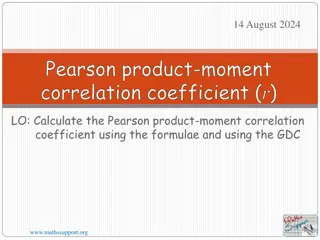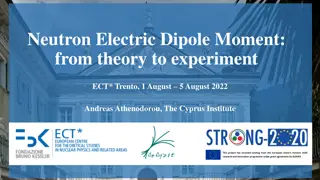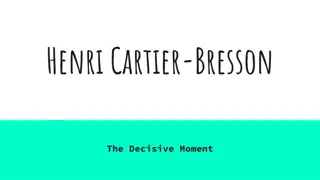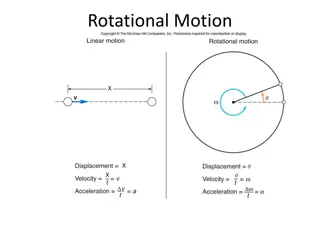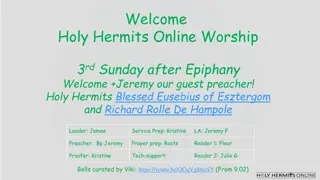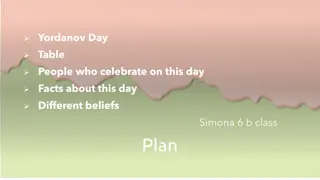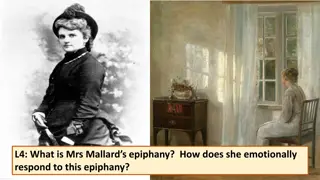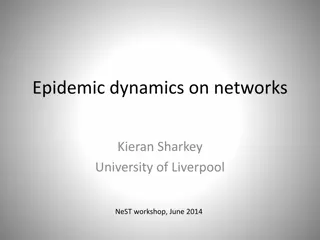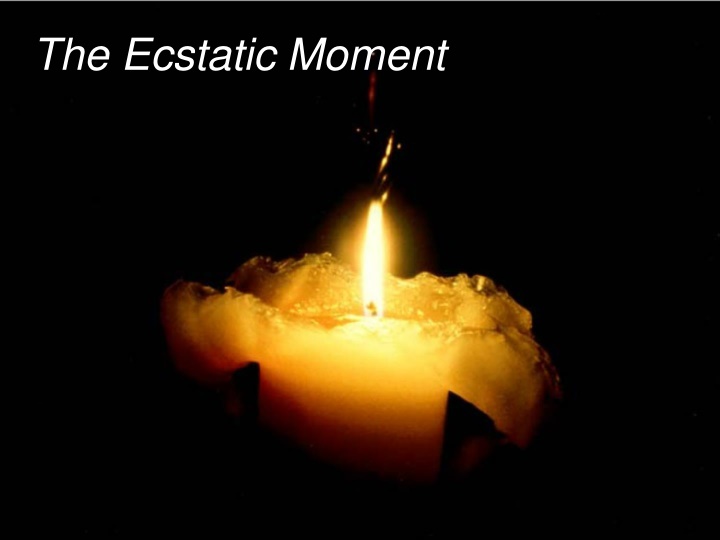
Exploring the Ecstatic Moment in Anti-Victorian Literature
Delve into the Anti-Victorian reaction, the Aesthetic Movement, and the pursuit of beauty and ecstasy in art and life. Discover how poets and writers challenged traditional norms, emphasizing the intensity of the ecstatic moment as a pathway to understanding existence and connecting with deeper truths.
Download Presentation

Please find below an Image/Link to download the presentation.
The content on the website is provided AS IS for your information and personal use only. It may not be sold, licensed, or shared on other websites without obtaining consent from the author. If you encounter any issues during the download, it is possible that the publisher has removed the file from their server.
You are allowed to download the files provided on this website for personal or commercial use, subject to the condition that they are used lawfully. All files are the property of their respective owners.
The content on the website is provided AS IS for your information and personal use only. It may not be sold, licensed, or shared on other websites without obtaining consent from the author.
E N D
Presentation Transcript
Meaning of the Ecstatic Moment in the Anti-Victorian Reaction The Anti-Victorian reaction: reaction against the self-satisfying morality and the rigid orthodox behaviour of the age; it developed at the end of the 19th century. In Victorianism the whole of literature became less didactic and poetry became more sensuous and less moralizing. One of the literary currents of the Anti-Victorian reaction was the Aesthetic movement: a movement which was moving art away from its traditional role as a teacher and moral guide. Its founder was Walter Pater. Art for art s sake : was the motto of the Aesthetic Movement. W. Pater refused faith and any other ethical system; art was the only way of stopping time through the intensity of the ecstatic moment. These moments of ecstasy are the full comprehension of life and destiny, time and art, and all, in one single figure.
The poets research of beauty in the ecstatic moment was the hard gem like flame (described as the real purpose of life). It was the aim of the aesthetic theory of the artists: the artist should care about form and technique and express himself freely. This conception of art was born as a consequence of the influence of the French symbolists poets (Baudelaire, Verlaine, Rimbaud, Mallarm ).
The aesthetes did not agree with Matthew Arnold or John Ruskin who thought that art should have a moral purpose and be useful. They shared with their predecessors, the Pre-Raphaelite poets, a belief in art for art s sake: art only needed to be beautiful, to justify itself. They rejected a simple type of realism: art in their opinion should not just reproduce the world, but should offer an alternative to it. They had no faith in reason, believing that true reality could only be found through senses and that beauty was the only thing that add any meaning. Walter Pater: Life is only a series of experiences and the way to give it meaning is to live these experiences as intensely as possible . The most important thing for Walter Pater was Beauty: life was usually ugly and sordid, only art could be really beautiful, so life should copy art .
The ecstatic moment in Virginia Woolf. Moments of being Virginia Woolf distinguishes the ecstatic moments into: moments of being moments of non-being A moment of being is a moment of intense power and beauty, energy and awareness, when an individual is fully conscious of his experience; a moment when he is not only aware of himself but catches a glimpse of his connection to a larger pattern hidden behind the opaque surface of daily life. A moment of non-being is a moment when the individual lives and acts without awareness, performing acts as if asleep. He is not consciously aware of even as he experiences them.
The ecstatic moment in James Joyce: Epiphany Codice religioso: festa durante la quale gli astrologi seguono la cometa per andare a trovare la culla di Ges illuminazione Epiphany is the twelfth night of January when Christ is visited by three wise men and his divinity is revealed to the world. It derives from a Greek word epiphainen meaning to manifest and in pre- Christian times it was used to record appearances of Gods and Goddesses. Traditionally the word has kept this specific religious association, but in our century it has been secularized to refer to other, non-divine forms of revelation. James Joyce named these moments of prose, epiphanies. By an epiphany he meant a sudden spiritual manifestation and one of the most delicate and evanescent of moments.
The work in which James Joyce introduces the concept of Epiphany is Dubliners, a collection of 15 tales in which everyone shows the interior universe of a citizen passing from the first person narrator to the third person narrator to underline the moment of estrangement of the subject from reality and the consequent immersion in his or her consciousness.
The protagonists of the novel are the Dubliners; its aim is to show their everyday stories to focus the reader s attention on two important aspects common to all tales: paralysis and escape. Paralysis is principally moral, caused by politics, by culture, by religion and it is represented in the novel through the physical and psychological paralysis of the characters or through the description of motionless places. The characters paralysis is the culminating point of Epiphany, a sudden spiritual revelation caused by a an object, an everyday banal situation which the character lives in a moment of crisis and for this reason it reveals of fundamental importance in his or her life. the tale: gesture, The Epiphany is considered a point of non-return because after this moment the character sees the world in a different way. In J. Joyce s idea an epiphany reveals the most important meaning of existence; it brings people beyond appearance and it is the central point, the key point in a nove or short storyl.
The natural reaction to the oppression caused by paralysis is escape, exile Almost all characters try to escape but without success because nobody is able to forget his world and begin another life in a different place: nobody is able to get free from oppression and paralysis. The narrative technique used by James Joyce is the stream of consciousness technique used to represent characters thoughts freely, in the exact way as they pass through their minds. There is no mediation on the narrator s side. Grammatically it is characterized by the absence of punctuation or conjunctions; moreover the text is not organized into paragraphs or phrases (an example is the last part of Joyce s Ulysses: Molly Bloom s interior monologue ).


![Download Book [PDF] From This Moment: Special Edition Paperback (After We Fall](/thumb/42280/download-book-pdf-from-this-moment-special-edition-paperback-after-we-fall.jpg)

